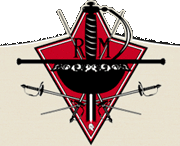Having been trained in both the classical French and Italian schools of fencing. I want to make it perfectly clear that I do not owe allegiance to any one school of fencing.
My allegiance is to the truth, to what is functional and martially sound in its adherence to universal fencing theory, which is irrefutable. No country, school or system has sole proprietorship of the art and science of fencing.
All of the polemics that have existed between these two schools of fencing have served only to confuse the would-be fencer as to which one is better and divide fencers into unnecessary factions. The simple truth is that the question of which school is the best is irrelevant. The best school is the one that speaks to you where you feel most comfortable in its method of training. The fact of the matter is that either school has much to offer.
In studying the history of Italian fencing it is a fact that there has never been one monolithic school of Italian fencing but several. No one voice has ever spoken exclusively for all of Italian fencing. In the classical era fencing in Italy was divided into branches of fencing being the northern, central, southern and Sicilian schools. These can be further divided into schools originating from cities such as Bologna, Milan, Florence, Livorno, Rome, Naples, Palermo and Catania. Italian fencing can be further subdivided into family systems such as Zangheri, Lambertini, Enrichetti, Radaelli, Parise and Greco. The virulent factionalism that took place in Italy between these varied but closely related systems was an astonishing historical phenomenon.
Suffice to say is that Italian fencing has always been of one character and the “differences” are merely stylistic nuances as all of the schools even those that claim to be of a "mixed Franco-Italian school” adhere to Italian fencing theory as it was firmly established by the 17th century.
In contrast during the classical era the French school was a unified body. The only distinction was between the military and civilian salle d’armes. This can be evidenced through reading any of the major French fencing texts written by notable masters such as La Boëssière, Gomard, Grisier, Cordelois and comparing these to the Manuel d’escrime of 1877.
However, even within this unified school there were minor technical differences that took place amongst masters of the French Academy such as Prévost, Le Marche, Jacob, Ainé, Spinnewyn and Manoury, that also lead to some polemics but nowhere near the scope of what occurred in Italy. To get into the petty politics and rivalries of either school would be an interesting study but not to the present purpose. Rather it is my intention to express my views and opinions on some of the most blatant misconceptions held by both schools of each other’s practice.
